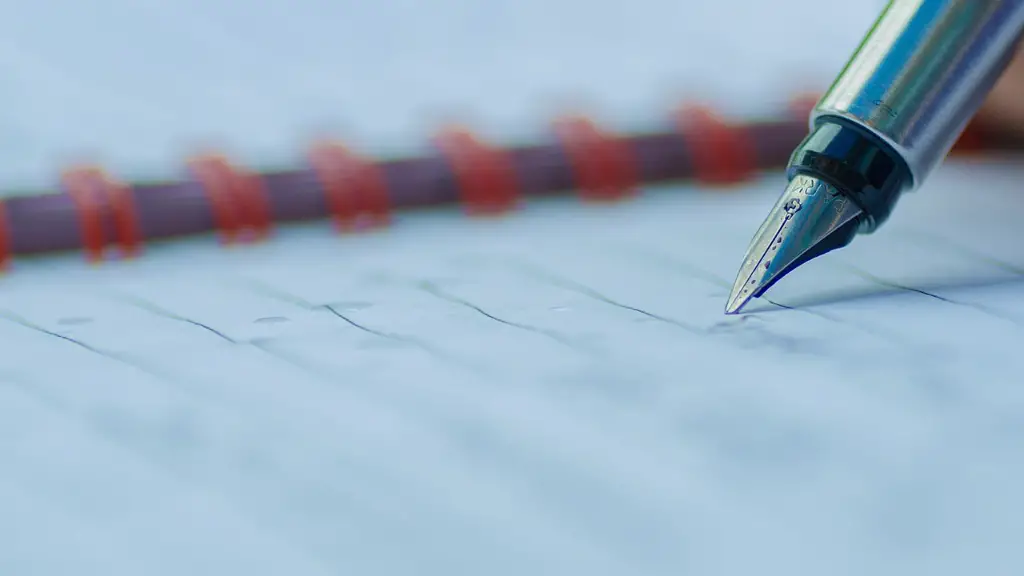The Evocative Style of Walt Whitman
Walt Whitman is one of the most celebrated American poets of the 19th century. He is renowned for exploring themes of nature and humanity with lyrical force and for pioneering a new style of poetry. His famous poem, “Leaves of Grass”, has both influenced and inspired a generation of writers and thinkers. Whether you’re an aspiring poet or a hobbyist seeking new forms of expression, exploring the art of the “poet-bard” Walt Whitman can help you craft words with insight, emotional depth, and sincere meaning.
The Basics of Writing a Poem
Writing a poem is not as difficult as it seems. It is simply expressing one’s thoughts and feelings in a structured, succinct manner. If you’re looking to write a poem inspired by the works of Walt Whitman, it is best to first understand the traditional requirements for a successful poem.
The most basic elements of a poem are its poetic meter, rhyme scheme, stanzas, and characterization. Poetic meter refers to the number of syllables per line and the specific pattern which they are arranged in. Rhyme scheme is the pattern of end words that rhyme in each other. For example, in a Shakespearean sonnet, the rhyme scheme is abab cdcd efef gg. Stanzas are a specific group of lines meant to convey a specific part of the overall poem. Characterization is the task of using words to paint a vivid picture of a character or event in order to communicate a message.
The Significance of Imagery in Poetry
The primary tool of the poet is imagery. Imagery is the use of poetic language to create an image in the reader’s mind. Walt Whitman was known for heightening the atmosphere in his poetry by using symbols, associations, and vivid descriptions. By being specific and utilizing detail, the poet can effectively cast a powerful mood upon the audience.
Through imagery, the poet can use language to create feelings of delight and deep emotion. For instance, sensory words like “-ing” verbs, adjectives and adverbs help to create a lasting impression in the reader’s mind. In addition to establishing atmosphere, imagery is also important for painting a vivid picture of the subject matter for readers.
Make Metaphors, Similes and Personification a Feature
A great way to enliven a poem is to enrich it with metaphor, simile, and personification. Metaphors are a comparison of two unlike things that are not meant to be taken literally, but rather to invoke an emotion or create a vivid image in the reader’s mind. Similes also use comparison, but they explicitly denote the idea being compared by the use of the words “like” or “as”. Personification is the act of giving inanimate objects human characteristics.
Walt Whitman is known for the masterful use of all three of these literary devices. His poem, “O Captain! My Captain!” is a prime example of the way he was able to use simple metaphors to effectively and poignantly convey his ideas. Through the use of personification, Whitman is able to evoke sorrow and emotion in his readers.
Conclusion
Writing a poem can be a challenging and rewarding task for any writer. While it may take time and effort to craft an effective poem, the rewards of successfully reproducing the evocative style of Walt Whitman are well worth it. To write a poem like Walt Whitman, focus on using poetic language, imagery and figurative language to help convey a vivid and powerful mood. Also, take cues from the masterful use of words in Whitman’s poetry and strive to create something just as distinctive and meaningful.
The Importance of Accuracy
When writing poetry, it is important to remember the importance of accuracy. Many poets express themselves through their choice of words, which makes accuracy an essential part of the creative process. Using accurate language helps to create an atmosphere of trust between the poet and the reader. Writing a poem like Walt Whitman requires attention to detail and precision in order to effectively express the intended emotion and meaning of the poem.
Focus on Connecting With Readers
Another factor to take into consideration when writing a poem like Walt Whitman is the connection the poem forges with readers. Writers must try to create meaningful connections with readers through their poems. This means that the language used in the poem should reflect the realities that the reader is likely to be familiar with, so that the reader can relate to and appreciate the poem. Focusing on this connection is often essential for creating an effective poem.
The Influence of Nature in Walt Whitman’s Poems
One important aspect of Walt Whitman’s poetry is his exploration of nature. Nature proved to be a powerful subject and source of inspiration for Whitman, and he often turned to it as a way of expressing his ideas and feelings. His poems often paint vivid images of natural settings, while still conveying a certain level of admiration and respect for the power of nature. By taking cues from nature, the poet can effectively explore the human experience, while connecting with the reader through familiar imagery.
Engaging With Meta-Meaning in Writing
Finally, when writing a poem with Walt Whitman’s style, be sure to consider the importance of symbolism and meta-meaning. Meta-meaning is the concept of writing beyond what is written, digressing from literalism or traditional storytelling to explore the real message or deeper meaning behind the words.
Walt Whitman was an expert in using imagery and vivid language to explore the themes of humanity and nature. By engaging with meta-meaning in a poem, the poet can craft something meaningful without directly expressing the idea at hand. Through the use of symbols and powerful language, the poet can communicate something profound that might go beyond the literal meaning of the words.
Exploring the Power of Rhythm in Poetry
Rhythm plays an integral role in creating a powerful and effective poem. Walt Whitman was renowned for expertly crafting rhythmic structures and overlaying them with emotive language, which effectively conveyed his message. By playing with rhythm and the various elements of a poem, the poet can create something unique and memorable.
Exploring the use of rhythm in poetry can help a poet to add an extra layer of depth and emotion to their work. Studies have shown that readers are often more engaged by a poem when they can hear a certain set of rhythms. Poets can also utilize meter to add an extra level of meaning to their work and to emphasize certain words or themes.
Stay True to Yourself
Finally, when seeking to create a poem in the style of Walt Whitman, the most important piece of advice is to be yourself. Although it can be helpful to explore the work of other poets, the poet must remember that only he or she can write their own unique poem.
Incorporating bits of Whitman’s style and techniques can help to further refine an aspiring poet’s work. But, no matter the genre, the poet must never forget the most important aspect of writing – to remain true to themselves, words, thoughts, and feelings. Only then can an honest and powerful message be expressed.


